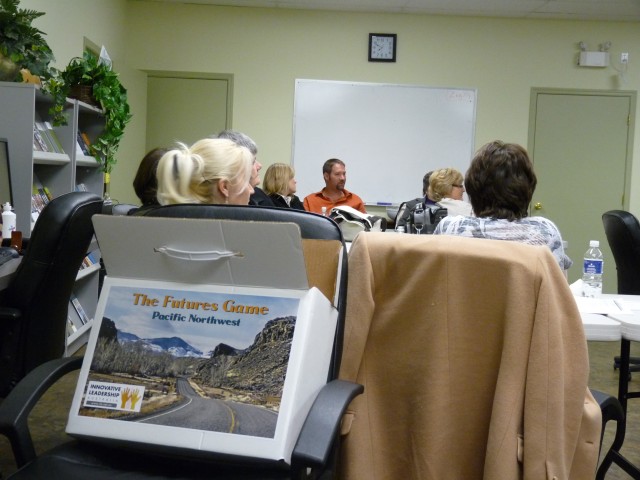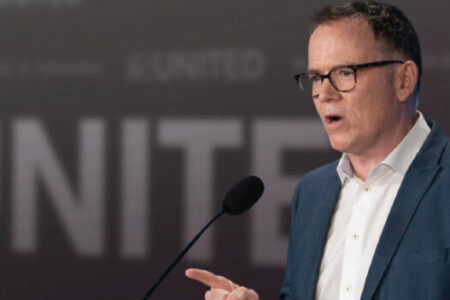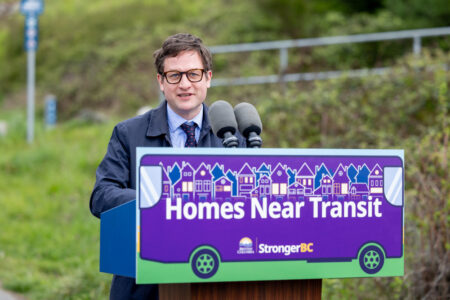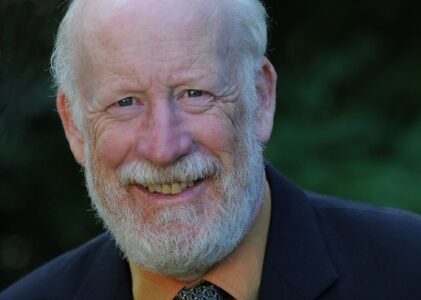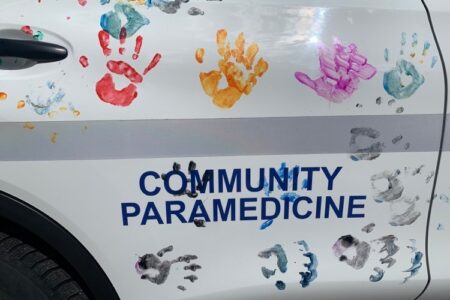Playing the futures game
It’s always easy to critique local politicians who make decisions that impact the future of their communities if you’re sitting on the outside. How would you do if you were sitting at that table? Would your region become a “Gem of the Gem” or could you end up in “Poverty with a View?” You might find that the task and the decisions to make are not so easy, as participants at an evening hosted by the Boundary Economic Development Committee (BEDC) and Community Futures Boundary discovered when they played the Futures Game.
With three groups working through the game on May 5, the outcomes were very different. The evening’s participants were a mix of community members, local politicians, and municipal staff. In each of the groups playing, decisions were swayed by the team players, and even people who think they are firm in certain beliefs can be moved by the power of the group. In the end, all three groups had different results.
“We have groups of five because it is good if the vote is uneven. About 10 groups makes it really interesting because the interaction just gets more and more interesting. It even gets louder and louder as you go through the game and get closer to the end and they begin to get the hang of what they’re looking for,” said Grace McGregor, regional area C director.
“I think for some people it would be good to play more than once because the first time gets you familiar with what you’re looking for. The second time if you play with a completely different group then you look at it differently depending on the type of person you’re sitting with.”
The Futures Game is a workshop tool that has been designed to help groups explore how regional and local decisions can shape long-term economic, environmental, and community well-being. This “futures simulation” approach can be used in a range of ways including:
• engage communities and groups in discussions about the future;
• add extra depth and strength to regional planning efforts;
• help hone leadership and decision-making skills;
• as a team building and change-management tool.
The game can be used as a powerful tool to stimulate debate and discussion about the future. The game was developed by Innovative Leadership Australia, a group who specializes in working with communities doing rural and regional development.
McGregor purchased the game on behalf of Christina Lake regional area C to share across the region after she had participated in a session at a workshop and felt strongly that it would help people in the area understand the difficulties in planning for communities.
“The first time I played I tried to keep the environment most important at all times. And I lost a town! Instead of looking at the whole balance and I think that’s the result of the diverse people at the table because they’re all looking at something different. I think we need to involve people more in understanding how decisions are made. This gives you practice just interacting in making those decisions,” said McGregor.
Jennifer Wetmore, BEDC co-ordinator and Futures Games facilitator, took the game to the recent Columbia Basin Trust youth conference. Wetmore said the youth loved the game, and McGregor would like to see more youth trying it out. The game will be available for groups to set up sessions across the Boundary and more facilitators are being trained to be able to help with those sessions.
“We intend to do a lot more of these. It’s taking off actually. The youth event over in Castlegar went so well I got a call asking about possibly playing it in other areas. We’re really happy about it,” said McGregor.
How The Futures Game works
Each team starts with a base map depicting a hypothetical region including small towns, a variety of land uses and ownership, and a mix of landscapes and businesses. At each of five stages (for example 2010, 2012, 2015, 2020 and 2030), teams are presented with a particular situation and asked to choose between two critical decisions.
They are also given a set of important national and international events to consider as they make their choice. After each stage, teams receive a new map depicting the impact of their decision on regional land use, town population and services, local businesses and the economy. By the game’s end point in 2030, each team has charted a course for the future reflecting the decisions they’ve made in the game.
The game takes a multifaceted and integrated view of the future, allowing people to explore a range of plausible outcomes. By the end, it’s clear to everyone that choices about people and place can have significant and sometimes unexpected long-term consequences on the region and its communities.
What people gain from playing The Futures Game
Communities and organizations can use the game’s future simulation approach to achieve several powerful outcomes. The most obvious is that people have a chance to discuss growth and development in a hypothetical region, making it easier to explore alternatives than is often the case in real world settings. They learn how decisions that seem sensible in the short-term may play out in unpredictable ways over time, making it critical to shift course to reflect new priorities and values.
Many communities use the game to assess where they are today relative to where they’d like to be 20 years in the future. In this way, it can be a powerful way for community members to consider their own vision and desires for the future of their region and community, and begin to explore the action steps required to get to their preferred future.
On an individual and organizational level, The Futures Game can be an excellent tool for people to explore decision making, and to better understand their own leadership and decision making styles.
Link:
Innovative Leadership Australia


